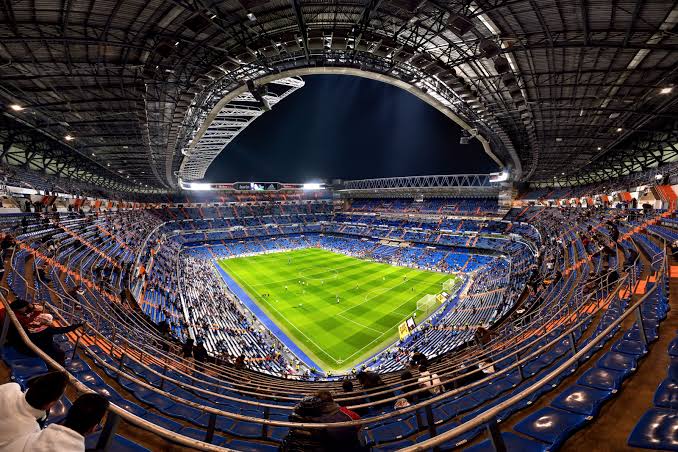Spain hosts among the largest and most well-known venues worldwide. They really illustrate how much the people there love football and are quite remarkable. The article “The Top Ten Largest Football Stadiums in Spain” explores the grandeur of these venues with their great dimensions, extensive histories, and great cultural value. These are holy grounds where tradition, community, and passion all gather, not only venues for events including games. Every year, millions of visitors and supporters come to these grounds since they are magnificent architectural creations.
From thrilling La Liga games to international competitions, they have a lot of events. Every field has a unique narrative to share about significant events that have occurred there, including games that will live in Spanish football’s annals or record-breaking attendance. Emphasizing their size, atmosphere, and function as monuments, this book explores what distinguishes these stadiums. Sports enthusiasts, visitors, and those eager to discover Spain’s rich football scene will find this location perfect. Whether your vacation to Spain or simply like the game, this article will explain why these large arenas are the center of Spanish football.
The Top Ten Largest Football Stadium In Spain
10. Reale Arena
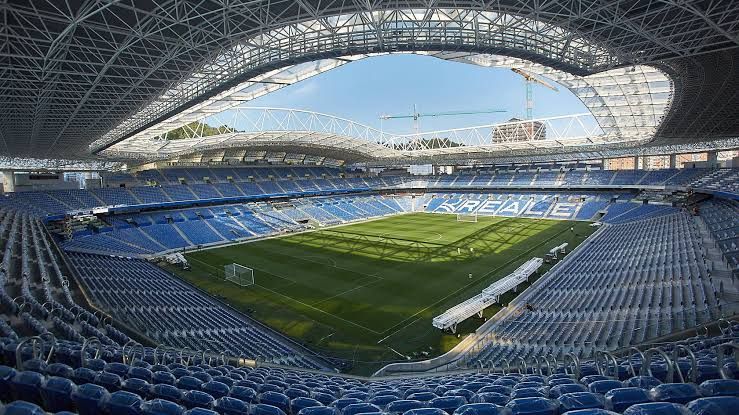
Located in the vibrant city of San Sebastian, Basque Country, Reale Arena is the proud home of Real Sociedad, accommodating 40,000 passionate fans. Originally opened in 1993 as Anoeta Stadium, it underwent a transformative €78.6 million renovation from 2017 to 2019, enhancing its modern appeal and bringing spectators closer to the pitch for an immersive experience. The redesign removed the running track, a feature that once distanced fans, and introduced a sleek, contemporary aesthetic. Known for its electric atmosphere, particularly in the Aitor Zabaleta singing section, the stadium has hosted significant events like the 2020 UEFA Women’s Champions League Final.
Its capacity can expand to 42,300 for special occasions, positioning it as a potential venue for the 2030 FIFA World Cup. Accessible via Anoeta station and multiple bus lines, Reale Arena combines convenience with a rich footballing tradition. The stadium’s modern facilities and passionate fanbase make it a cornerstone of Basque football culture, drawing visitors eager to experience its unique charm during LaLiga matches.
9. Ramon Sanchez Pizjuán
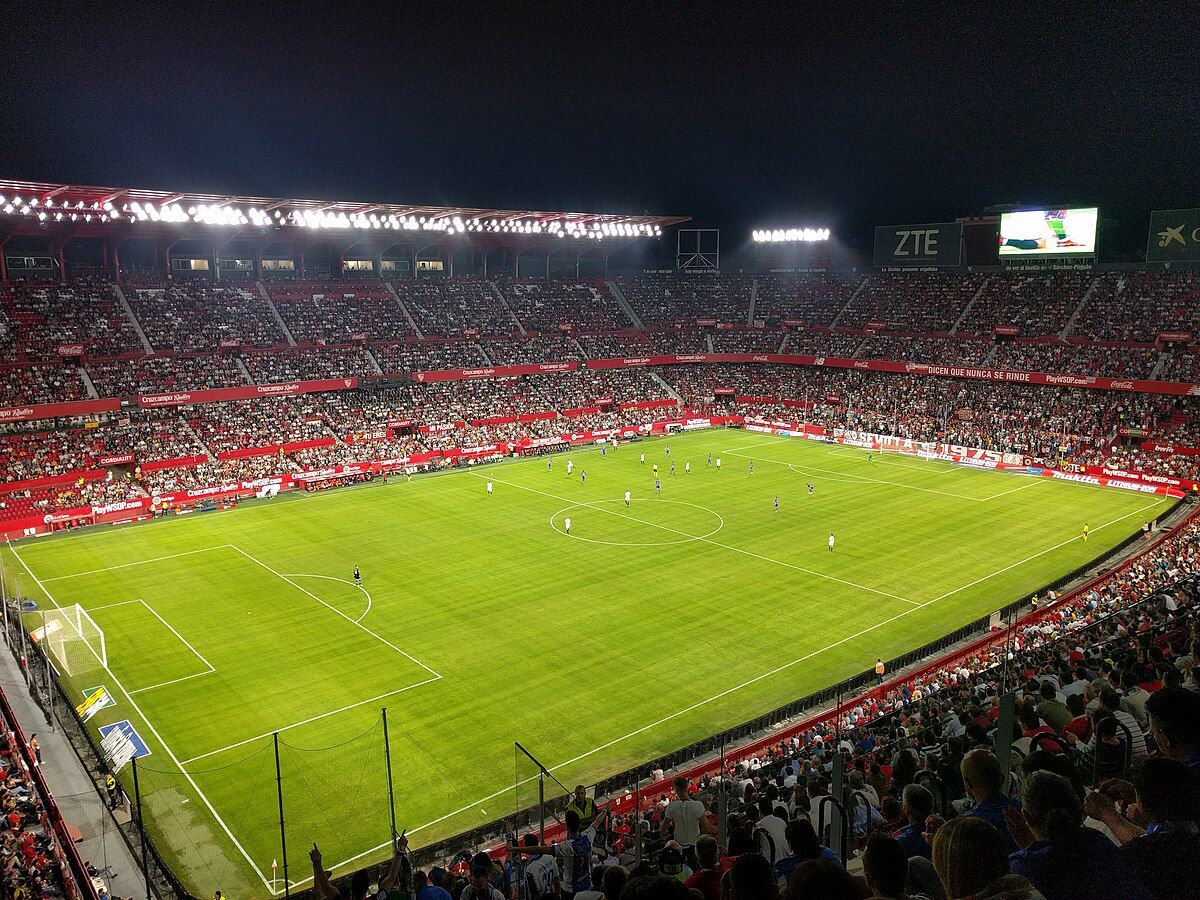
Nestled in Seville, Andalusia, the Ramon Sanchez Pizjuán Stadium, home to Sevilla F.C., boasts a capacity of 43,883. Opened in 1957, this iconic venue is celebrated for its intense, intimidating atmosphere, often described as one of the loudest in Spanish football. Named after the club’s legendary president, the stadium has witnessed Sevilla’s rise as a European football powerhouse, particularly in the UEFA Europa League. Plans for a major redevelopment are underway, aiming to modernize facilities while preserving its historic charm.
The stadium’s compact design ensures fans are close to the action, amplifying the energy during matches. It has hosted significant events, including Spain national team games and the 1986 European Cup final. With its rich history and passionate supporters, Ramon Sanchez Pizjuán remains a must-visit for football enthusiasts exploring Spain’s top venues. Its central location in Seville, coupled with excellent transport links, makes it easily accessible for fans seeking an authentic LaLiga experience, ensuring its legacy endures in the heart of Andalusian football culture.
8. Mestalla

Mestalla Stadium, located in Valencia, is the historic home of Valencia C.F., with a seating capacity of 49,419. Opened in 1923, it ranks among Spain’s oldest football venues, exuding a timeless charm with its steep, imposing stands that create an electrifying matchday atmosphere. Known for its passionate fanbase, Mestalla has been the backdrop for Valencia’s numerous successes, including LaLiga titles and European campaigns. Plans for a new stadium, Nou Mestalla, began in 2007 but have faced repeated delays due to financial constraints, keeping the original venue at the heart of the club’s identity.
Its architectural design, with fans almost on top of the pitch, enhances the intensity of games, making it a formidable ground for opponents. Mestalla’s rich history, combined with its cultural significance in Valencia, draws football tourists eager to witness its unique ambiance. Well-connected by public transport, including metro and bus routes, the stadium remains a beloved symbol of Valencian football, offering an unforgettable experience for visitors exploring Spain’s football heritage.
7. Estadi Olimpic Lluis Companys
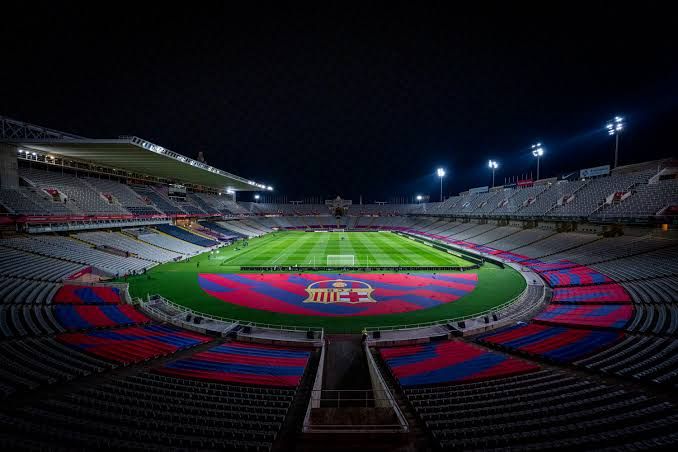
Situated on Montjuïc Hill in Barcelona, Catalonia, Estadi Olimpic Lluis Companys currently serves as the temporary home for F.C. Barcelona during Camp Nou’s renovation, with a football capacity of 49,472. Originally constructed for the 1929 International Exposition, it was later refurbished for the 1992 Summer Olympics, earning its status as a multi-purpose venue. Its football capacity is capped lower than its full 60,000 for safety and configuration reasons, but it remains a significant venue in Spanish football. The stadium’s open, bowl-like design offers stunning views of Barcelona, blending historical grandeur with modern functionality.
While hosting Barcelona, it has adapted to accommodate the club’s massive fanbase, though its temporary role underscores its versatility. The stadium’s Olympic legacy and its current role in LaLiga make it a unique destination for football fans. Accessible via metro and funicular, it provides a convenient and scenic experience, bridging Spain’s sporting past with its present, as fans await the return to the revamped Camp Nou.
6. San Mamés

San Mamés Stadium in Bilbao, Basque Country, is the modern home of Athletic Bilbao, with a capacity of 53,289. Opened in 2013, it replaced the original San Mamés, fondly nicknamed “La Catedral,” and is widely regarded as one of Spain’s most atmospheric football venues. Its sleek, futuristic design, with a glowing red exterior, reflects Bilbao’s industrial heritage while incorporating cutting-edge facilities. The stadium’s steep stands create an intense, cauldron-like environment, often cited as LaLiga’s best atmosphere, fueled by Athletic Bilbao’s loyal, local fanbase.
It has hosted international matches, including Spain’s national team games, and is a candidate for the 2030 FIFA World Cup. The venue’s commitment to sustainability, with energy-efficient systems, adds to its modern appeal. Well-served by Bilbao’s metro and tram networks, San Mamés is easily accessible, drawing fans for both football and cultural events, such as concerts. Its blend of tradition and innovation makes it a standout in Spanish football, offering an unforgettable experience for visitors.
5. Benito Villamarin

Benito Villamarin Stadium, located in Seville, Andalusia, is the cherished home of Real Betis, with a capacity of 60,721. Opened in 1929, this century-old venue has evolved through multiple renovations, notably the 2017/18 South Stand expansion, which boosted its capacity and modernized facilities. Named after a former club president, it embodies the passionate spirit of Betis supporters, with average crowds of around 50,000 creating a vibrant atmosphere. The stadium’s green-and-white aesthetic reflects the club’s identity, while its location in Seville’s Heliopolis district makes it a focal point of local pride.
It has hosted Spain national team matches and remains a key LaLiga venue. Recent upgrades, including improved seating and hospitality areas, enhance the fan experience, blending tradition with contemporary comfort. Accessible via bus and nearby train stations, Benito Villamarin is a must-visit for those exploring Spanish football’s rich tapestry, offering a lively matchday experience steeped in Andalusian culture and footballing heritage.
4. La Cartuja

Estadio de La Cartuja in Seville, Andalusia, is a multi-purpose venue with a capacity of 70,000, following its 2025 expansion. Primarily used by the Spain national football team, it was originally built for the 1999 World Championships in Athletics and has since become a prominent football venue. It regularly hosts the Copa del Rey final and welcomed matches during Euro 2020, showcasing its versatility on the international stage. The stadium’s modern design, with spacious stands and excellent sightlines, ensures a comfortable experience for large crowds.
Its neutral status makes it ideal for high-profile finals and international fixtures, while its recent capacity increase positions it as a key venue for future events, potentially including the 2030 FIFA World Cup. Located on an island in the Guadalquivir River, La Cartuja is accessible by bus and tram, offering fans a unique setting. Its role in Spanish football’s biggest moments makes it a significant destination for global football enthusiasts seeking a taste of Spain’s sporting prestige.
3. Metropolitano
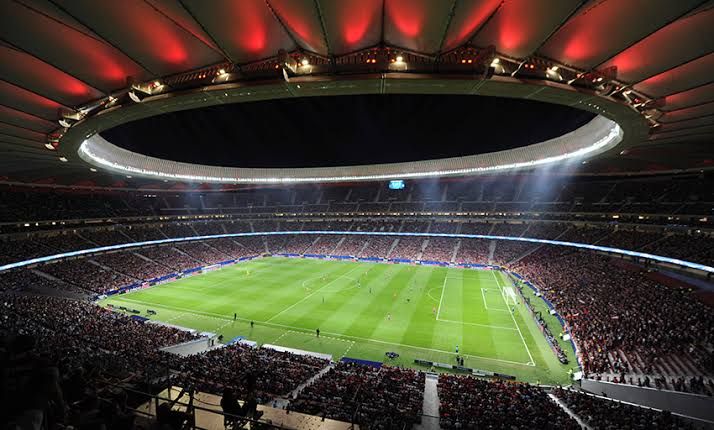
Estadio Metropolitano, located in Madrid, is the state-of-the-art home of Atlético Madrid, with a capacity of 70,560. Opened in 2017 as a replacement for the Vicente Calderón, this modern arena has quickly become a cornerstone of Spanish football. Its sleek design, featuring a distinctive red-and-white color scheme, reflects Atlético’s identity, while advanced facilities, including a retractable roof, enhance the fan experience. The stadium generates significant revenue for the club, often selling out for major LaLiga and Champions League matches, creating an electrifying atmosphere. It hosted the 2019 UEFA Champions League final, cementing its status as a global venue.
Well-connected by Madrid’s metro system, Metropolitano is easily accessible, with ample amenities for fans, including dining and entertainment options. Its modern infrastructure and passionate crowds make it a must-visit for football fans exploring Spain’s capital, offering a blend of cutting-edge design and intense matchday energy that defines Atlético Madrid’s spirit.
2. Santiago Bernabeu
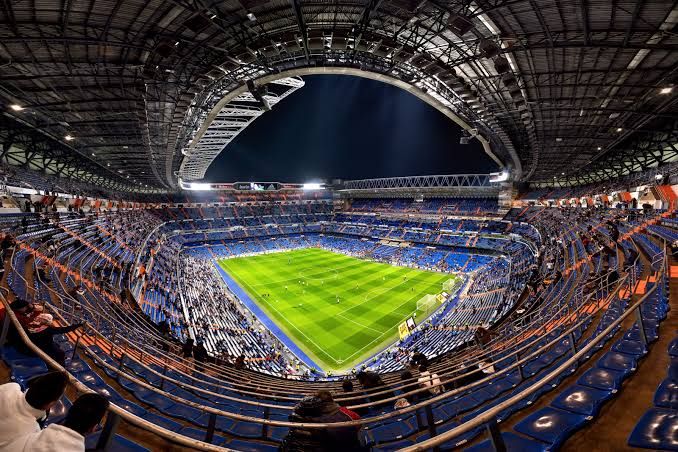
The Santiago Bernabeu Stadium in Madrid, home to Real Madrid C.F., boasts a capacity of 81,000, making it one of Europe’s most iconic football venues. Opened in 1947, it has undergone a transformative renovation, completed in recent years, introducing a retractable roof, a 360-degree video scoreboard, and eco-friendly features. Named after the club’s legendary president, the stadium is synonymous with Real Madrid’s global dominance, having hosted countless historic matches, including multiple Champions League finals.
Its modernized facilities, including luxury suites and a planned hotel, elevate the fan experience, blending tradition with innovation. Located in Madrid’s Chamartín district, it is easily accessible via metro and bus, attracting millions of visitors annually. The stadium’s cultural significance extends beyond football, hosting concerts and events, making it a landmark of Spanish sport. For fans, a visit to Santiago Bernabeu offers a chance to witness football history in a setting that combines cutting-edge technology with the legacy of one of the world’s greatest clubs.
1. Camp Nou
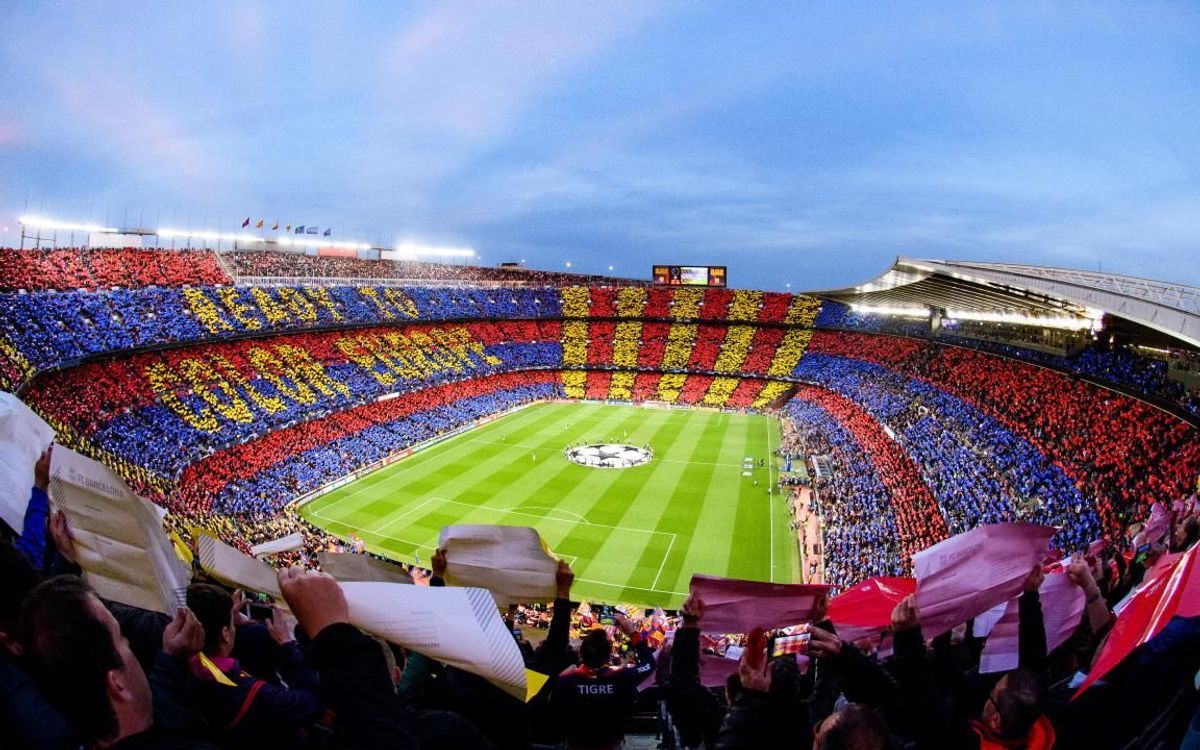
Camp Nou, located in Barcelona, Catalonia, is set to reclaim its title as Europe’s largest football stadium with a planned capacity of 105,000 upon completion of its renovation by 2026/27. Home to F.C. Barcelona since 1957, it has been the stage for countless iconic moments, from Lionel Messi’s brilliance to Champions League triumphs. Currently under a €1.5 billion redevelopment, the stadium is being transformed with modern facilities, including a new roof and enhanced hospitality areas, while preserving its historic essence.
Temporarily, Barcelona plays at Estadi Olimpic Lluis Companys, but Camp Nou’s return will redefine football venues globally. Its sprawling design and passionate Blaugrana fanbase create an unmatched atmosphere, making it a pilgrimage site for football fans. Accessible by Barcelona’s metro, it remains a cornerstone of Catalan culture and Spanish football. The renovated Camp Nou will blend state-of-the-art amenities with its storied legacy, ensuring its place as the ultimate destination for those seeking the heart of football in Spain.

